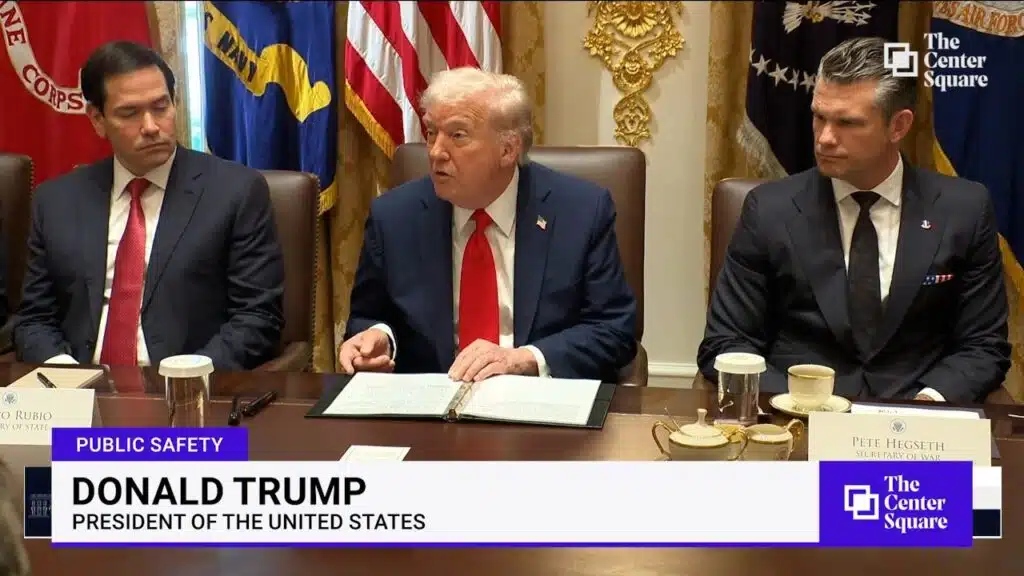
Biden’s Latest Power Plant Power Grab
Almost two years after a similar rule was rejected by the Supreme Court, the Biden administration on Thursday released another final rule for regulating America’s power plants.
Under the rule, coal-fired power plants and most new natural gas-fired power plants would have to eliminate 90% of their carbon emissions by 2039 or close down in 2040.
The Environmental Protection Agency’s new rule would raise electricity costs for Americans, kill manufacturing jobs, and disproportionately affect the poor, farmers, and small business.
EPA’s rule, if it overcomes legal challenges, would result in the closure of coal-fired power plants that now produce 16% of Americans’ electricity. It would make natural gas power generation, which produces 43% of electricity, more costly and increase the incidence of blackouts.
Under the rule, America would become a less attractive location for energy-intensive manufacturing and Americans’ electricity bills would rise.
This is the latest in a series of government attempts to reduce emissions—and power—from the nation’s energy-generating sector.
EPA’s Clean Power Plan, proposed in 2015 under President Barack Obama, stated that if emissions exceeded the agency’s requirements, a state or group of states would be required to shut down power plants or install renewable energy sources.
But although the Clean Air Act allows EPA to set maximum levels of new and existing emissions sources, the Supreme Court ruled 6–3 in West Virginia v. Environmental Protection Agency that the law does not allow EPA to shut down power plants.
Specifically, EPA can’t move from regulating individual power plants to regulating regional emissions, as it did in the rejected Clean Power Plan. The high court’s opinion cited the major questions doctrine, according to which Congress must “speak clearly if it wishes to assign to an agency decisions of vast economic and political significance.”
That’s why President Joe Biden’s EPA is trying another tactic to regulate emissions with this latest rule.
Rather than shutting down power plants by regulating regional emissions, as in 2015, the power plants would either have to comply with an unproven technology to sequester, or bury, 90% of their carbon dioxide emissions, or they would have to close down.
Obama issued his Clean Power Plan as a regulation because, despite sizable Democratic majorities in both chambers, Congress didn’t pass legislation to reduce emissions from power plants.
The American Clean Energy and Security Act (introduced in 2009 by Reps. Henry Waxman, D-Calif., and Edward Markey, D-Mass.) and the American Power Act (introduced the next year by Sens. John Kerry, D-Mass., and Joe Lieberman, D-Conn.) would have accomplished this, but neither proposal became law.
In the same way, Biden’s plan to close power plants would not pass Congress, so he is trying to bring out a regulation to achieve the same goal.
However, this term the Supreme Court is reconsidering the so-called Chevron doctrine, which now gives government agencies wide leeway to interpret laws. That decision is due in May or June.
If the high court overturns the Chevron doctrine, as predicted, EPA’s new power plant rule will be on weaker grounds, because it relies on an ambiguous interpretation.
In 2022, the Supreme Court found the first Clean Power Plan to be an example of “agencies asserting highly consequential power beyond what Congress could reasonably be understood to have granted.”
Writing for the majority, Chief Justice Roberts argued that “EPA claimed to discover an unheralded power representing a transformative expansion of its regulatory authority in the vague language of a long-extant, but rarely used, statute designed as a gap filler. That discovery allowed it to adopt a regulatory program that Congress had conspicuously declined to enact itself.”
Justice Neil Gorsuch concurred, saying: “The framers [of the Constitution] believed that the power to make new laws regulating private conduct was a grave one that could, if not properly checked, pose a serious threat to individual liberty.”
Severe, government-imposed cuts in carbon emissions raise the cost of electricity and American-made goods. Under EPA’s new rule, power plants would have to invest in more costly equipment or close down.
Cleaner air and efficient power generation are worthwhile goals. But so is the security that comes from a healthy economy and the rule of law.
The Supreme Court, which struck down Obama’s power plant rule in 2022, could well strike down Biden’s version in the future.


